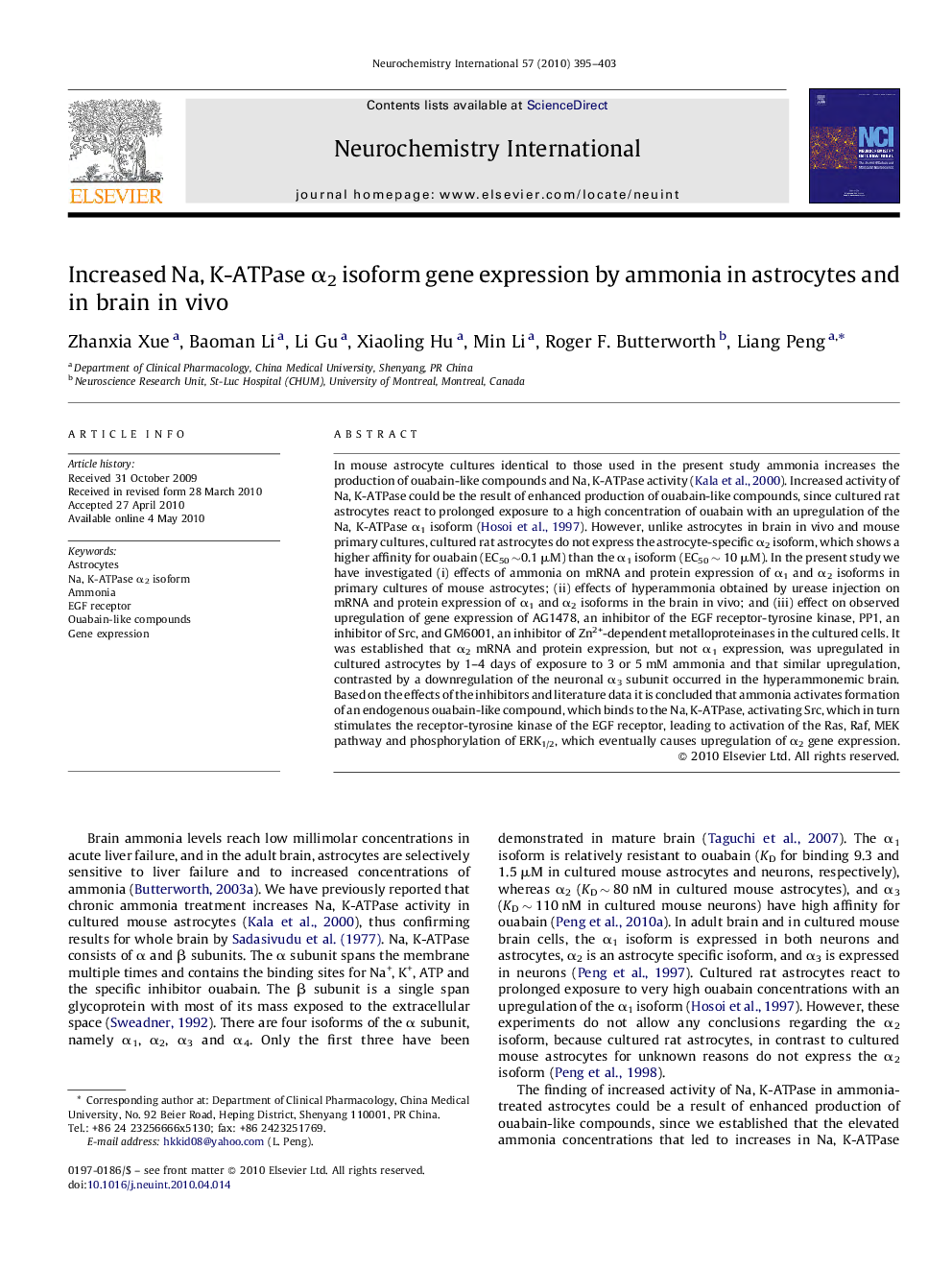| Article ID | Journal | Published Year | Pages | File Type |
|---|---|---|---|---|
| 2201233 | Neurochemistry International | 2010 | 9 Pages |
In mouse astrocyte cultures identical to those used in the present study ammonia increases the production of ouabain-like compounds and Na, K-ATPase activity (Kala et al., 2000). Increased activity of Na, K-ATPase could be the result of enhanced production of ouabain-like compounds, since cultured rat astrocytes react to prolonged exposure to a high concentration of ouabain with an upregulation of the Na, K-ATPase α1 isoform (Hosoi et al., 1997). However, unlike astrocytes in brain in vivo and mouse primary cultures, cultured rat astrocytes do not express the astrocyte-specific α2 isoform, which shows a higher affinity for ouabain (EC50 ∼0.1 μM) than the α1 isoform (EC50 ∼ 10 μM). In the present study we have investigated (i) effects of ammonia on mRNA and protein expression of α1 and α2 isoforms in primary cultures of mouse astrocytes; (ii) effects of hyperammonia obtained by urease injection on mRNA and protein expression of α1 and α2 isoforms in the brain in vivo; and (iii) effect on observed upregulation of gene expression of AG1478, an inhibitor of the EGF receptor-tyrosine kinase, PP1, an inhibitor of Src, and GM6001, an inhibitor of Zn2+-dependent metalloproteinases in the cultured cells. It was established that α2 mRNA and protein expression, but not α1 expression, was upregulated in cultured astrocytes by 1–4 days of exposure to 3 or 5 mM ammonia and that similar upregulation, contrasted by a downregulation of the neuronal α3 subunit occurred in the hyperammonemic brain. Based on the effects of the inhibitors and literature data it is concluded that ammonia activates formation of an endogenous ouabain-like compound, which binds to the Na, K-ATPase, activating Src, which in turn stimulates the receptor-tyrosine kinase of the EGF receptor, leading to activation of the Ras, Raf, MEK pathway and phosphorylation of ERK1/2, which eventually causes upregulation of α2 gene expression.
